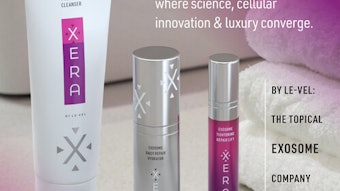
“Natural” formulations are one of the largest trends in personal care. Natural formulations, at minimum, make claims based on the botanical, plant-based ingredients they use. Some take an additional step and ensure they comply with stringent criteria outlined by the Natural Products Association (NPA) or United States Department of Agriculture (USDA) Organic criteria.
Why Natural is Growing
According to Mintel’s 2015 Global New Product Database (GNPD), roughly 35% of all product launches globally include a botanical/herbal claim, and less than 2% comply with NPA (Natural Products Association) guidelines globally. Since 2013 in North America, there has been a steady increase in product launches that make a “natural” claim in their description, as well as products with a botanical/herbal claim.
Aspirational consumers—consumers who are interested in the environmental and social impact of the products they buy—are a driving force behind the economy, and they expect that their product choices have the least environmental impact possible.
It’s easy to see why. The beauty of adding a botanical extract to your formulation is that consumers can readily identify botanical ingredients. This creates a feeling in the consumer that he or she is connected to nature, which in turn, inspires a feeling of well-being and in many cases, an emotional connection to the product and its brand.
Many botanical stories are strengthened by a complementary fragrance to heighten the sensory experience.
Certification and Premiumization
What are the criteria for certifying natural claims? There are various standards or criteria available to follow, like EcoCert/Cosmos in Europe or NPA in North America, as mentioned above. A survey by Shelton Group conducted for UL Environment identified the most influential claims (below).
Organization/Claim
- Coalition for Consumer Information on Cosmetics: Leaping Bunny—Not Animal Tested
- USDA: Organic
- USDA: Certified Bio-based Product
- NPA: Certified
According to industry reports detailed in the survey, when certified claims like these are accompanied by qualifying language, such as “contains no parabens,” which clarifies what the consumer is or isn’t getting, brands can demand a price premium.
However, making the claim “contains no parabens” alone without certification is said to lead to consumer confusion. The survey also found that use of certified claims can enhance positive brand image.
Why Consumers Buy Natural
Aspirational consumers—consumers who are interested in the environmental and social impact of the products they buy—are a driving force behind the economy, and they expect that their product choices have the least environmental impact possible. NPA defines a “natural” product as one that it believes furthers its mission to “maintain and improve” consumer health.
As one of the green chemistry principles mentioned earlier, the use of renewable feedstocks in raw material development is critical to sustainability.
But for consumers, personal well-being isn’t the only concern, according to NPA. The organization has said, “Natural products consumers are often motivated not only by their own health, but by making buying choices that lead to sustainability of the environment.”
The trending desire for overall personal, social and environmental well-being is driving companies to evaluate their sustainability credentials and their natural products and claims.
General best practices, such as Paul Anastas’ and John Warner’s “12 Principals of Green Chemistry" focus on using renewable feedstocks, overall safe, non-toxic substances that do not persist in the environment, and the prevention of accidents and pollution—another hot trend today.
Some consumer companies are reporting their use of renewable ingredients and others have publicly announced intentions to move away from petrochemical derived raw materials. In order to meet these reporting objectives, ingredient manufacturers must provide detailed information about material composition with as much traceability as possible.
Looking at life cycle analysis and the overall footprint of each ingredient used, consumer companies are building databases of information that allow them to design formulations with environmental impact front of mind.
Building a Better Supply Chain
While the industry has not regulated natural claims, there are strides being made in the raw material sector. The environmental impact of palm oil production has been brought to the public’s attention and organizations like the Roundtable on Sustainable Palm Oil (RSPO) have developed programs to certify sustainably produced palm oil.
This allows for environmentally minded manufacturers to influence significant changes along the palm oil supply chain by offering products made with Certified Sustainable Palm Oil (CSPO) derivatives.
As palm oil is the most efficient oil crop available today, it is widely agreed that it makes environmental sense to continue to supply palm oil derivatives as long as they are sustainably sourced and there is transparency throughout the supply chain.
The Tension Between Natural and Sustainable
As one of the green chemistry principles mentioned earlier, the use of renewable feedstocks in raw material development is critical to sustainability. And consumers like to know what’s in the products they use, especially when renewable resources are involved.
However, many of the functional surfactants that allow shampoos to clean hair and creams and lotions to stay together are currently made from ethylene oxide derivatives called ethoxylates, which are typically petrochemical based.
This can pose a concern for some consumers, who can be left with a tough decision: buy “natural” products and experience a potential sacrifice in performance or be less concerned with sustainable practices.
Why not remove that difficult decision altogether by manufacturing a bio-based range of ethoxylated products using ethelyne oxide derived from bioethanol? These products can strike the balance between performance and being fully renewable. Croda is taking that step with the development of a new plant at its Atlas Point site in Delaware.
Bio-based ethoxylated products could be an exciting development for large and small companies alike, whether they have a defined “green” program or simply desire to communicate a higher level of transparency with their customers.
Making Natural Easier
Consumers are increasingly basing their purchasing decisions on the environmental impact of a product and all that goes into it—the packaging as well as the raw materials. Transparency is key to winning them over.
Fortunately, developments within the raw material industry, like the manufacture of bio-based ethoxylated products, will make it easier to provide them with naturally derived formulations that meet the consumer need for renewable products.










